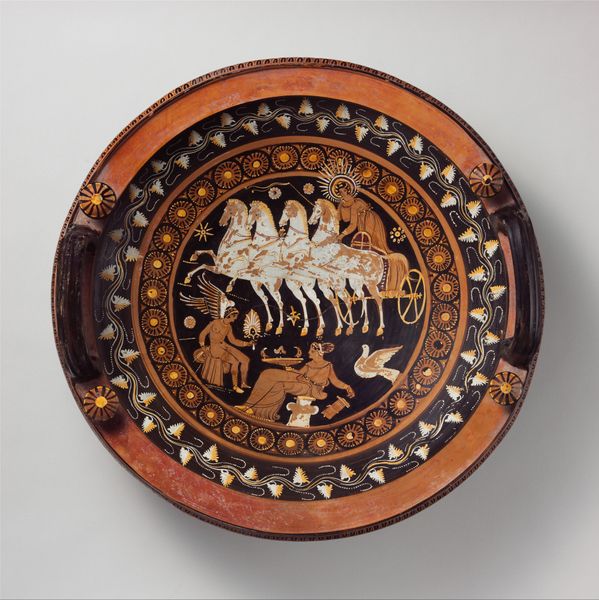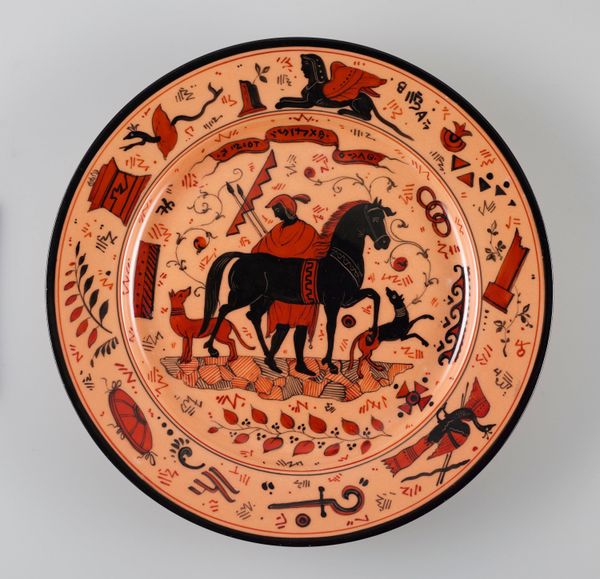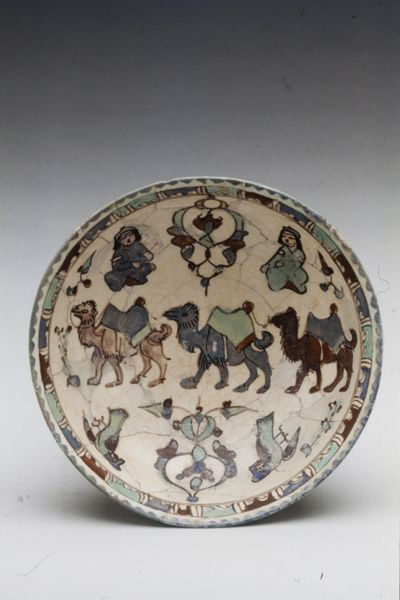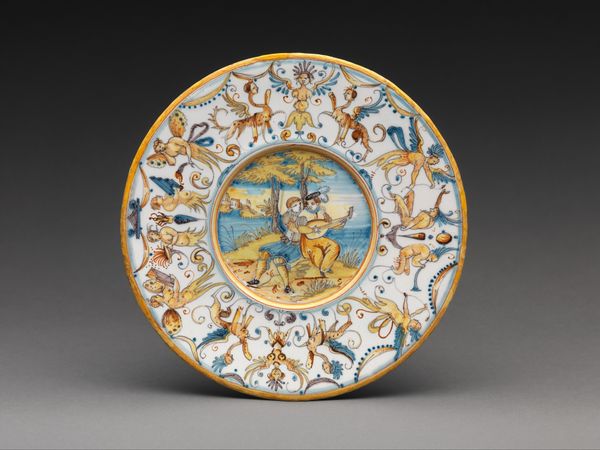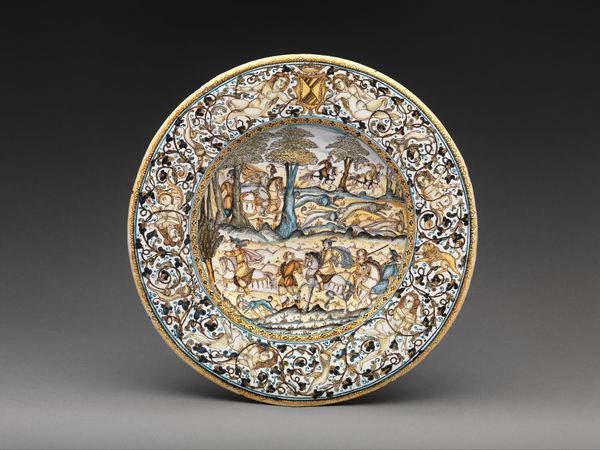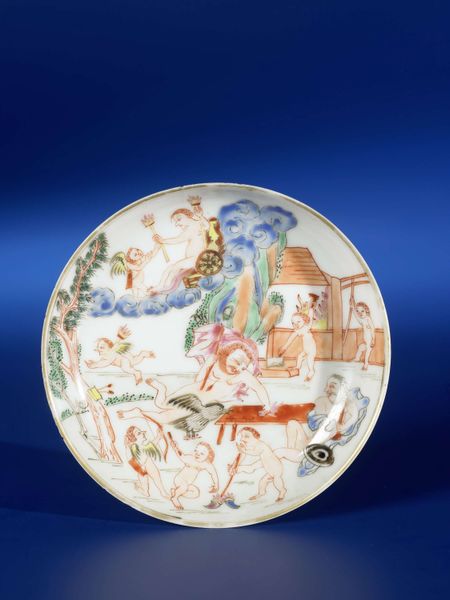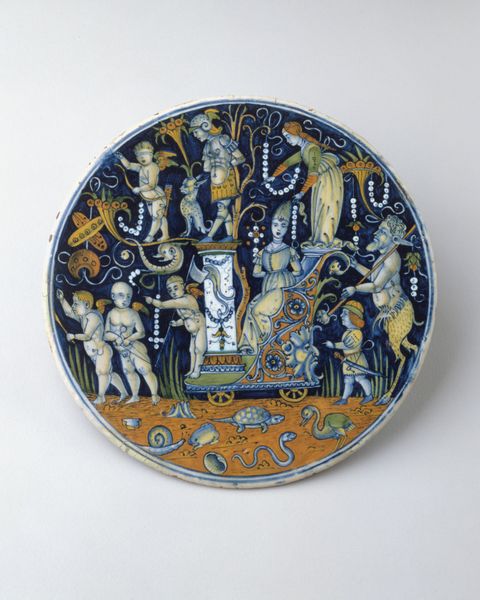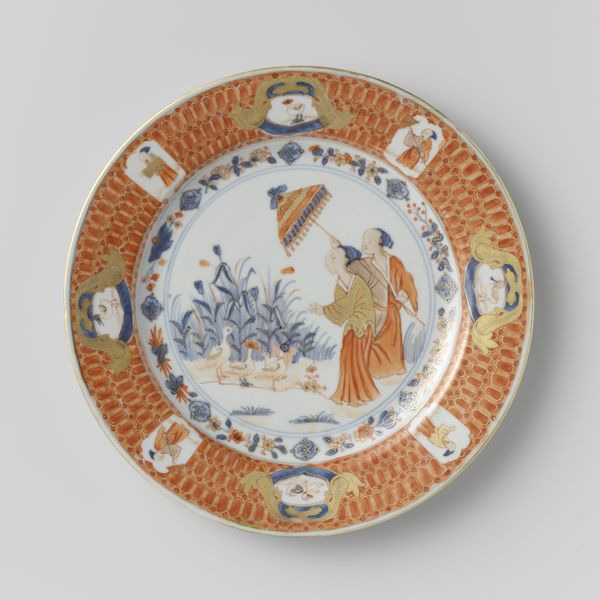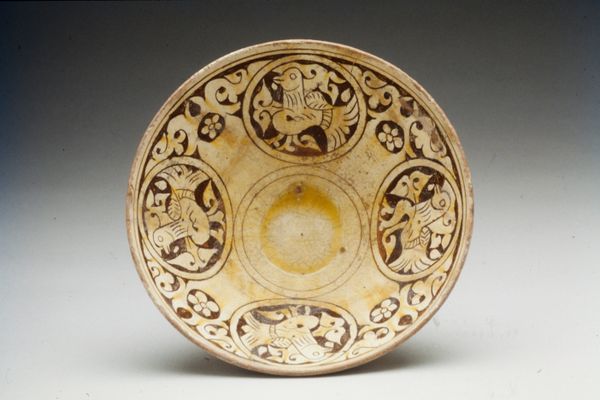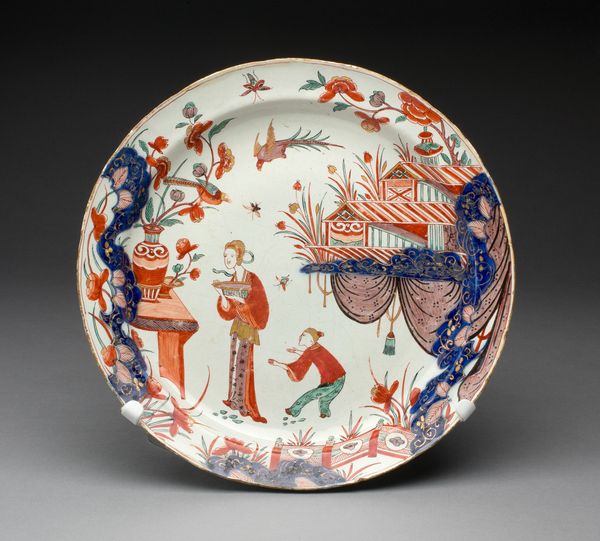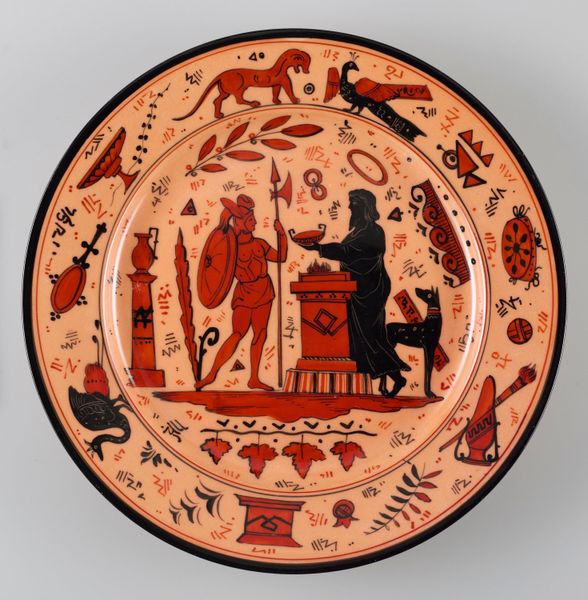
Display Plate with a Man Striking a Heart on an Anvil c. 1550
0:00
0:00
ceramic
#
decorative element
#
pottery
#
ceramic
#
folk-art
#
ceramic
#
genre-painting
#
history-painting
#
decorative-art
#
italian-renaissance
Dimensions: Diameter: 40 cm (15 3/4 in.), H: 9.5 cm (3 3/4 in.)
Copyright: Public Domain
Editor: Here we have a ceramic display plate titled "Display Plate with a Man Striking a Heart on an Anvil," made around 1550 by Societa anonima cooperativa per la fabbricazione delle maioliche in Deruta, Italy. The scene itself seems so specific! What can you tell me about it? Curator: Well, immediately, I see the significance of process and material. It's not just decoration; it's a display of craft. Consider Deruta itself – a place where maiolica wasn't just made, it was *manufactured*. How does the context of production impact your interpretation? Editor: I guess it elevates the artisan aspect of it, rather than purely viewing it as high art, or history painting like the tags suggest. Curator: Exactly! This plate collapses the boundaries between art and craft. Think about the labor involved in producing ceramics at this scale in 16th-century Italy. Does understanding the means of production change your perception of the plate's value or meaning? What about the purpose of displaying it? Editor: It makes me appreciate the skill of the artist much more. Seeing that the decorative element itself IS art in many ways. Were pieces like this commissioned by wealthy patrons? How did the original function affect its later significance? Curator: Precisely! That leads us to consumption. Who bought this? How was it used? The narrative painted is certainly compelling but inseparable from considering labor, skill, marketability, and display! And the plate as object -- that's all crucial for us today! Editor: So by looking at how it was made, by whom, and for whom, we unlock the history embedded in its materiality? Curator: Absolutely. The piece is more than just an image; it is material evidence of production, labor, and a social moment. Editor: This has really broadened my understanding of the plate, considering the process as an integral component of it. Curator: And hopefully enriched your understanding of the intersection of art, craft, and material history!
Comments
No comments
Be the first to comment and join the conversation on the ultimate creative platform.
